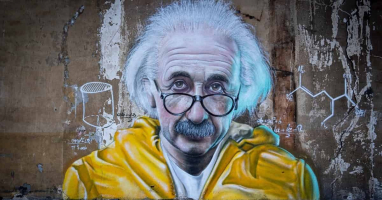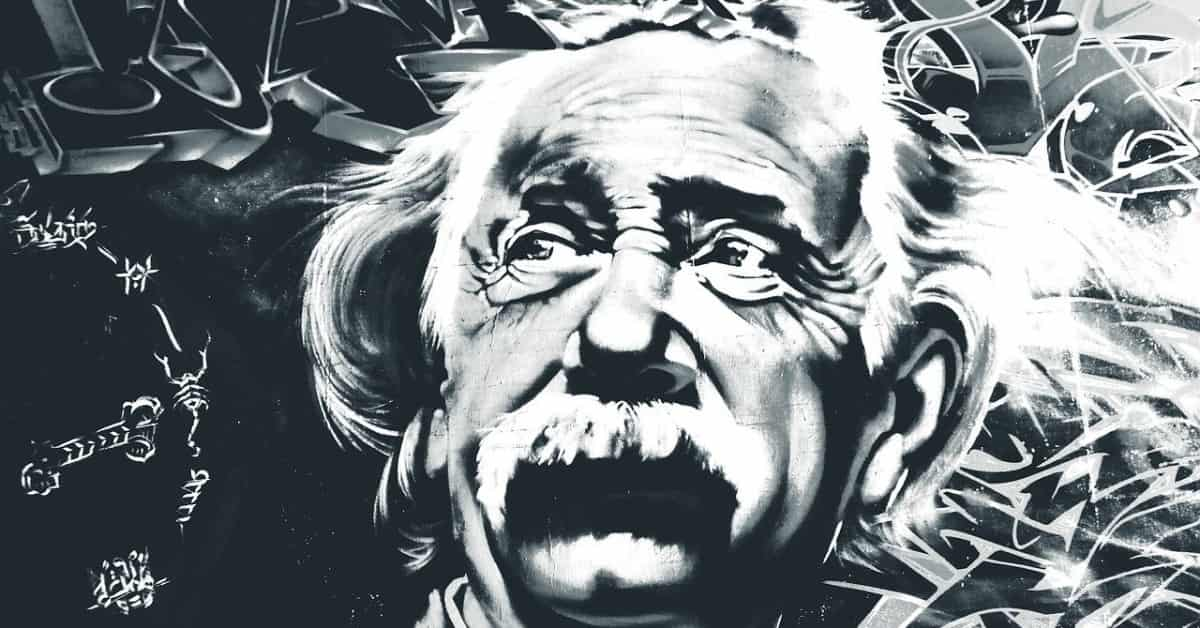I wrote this article in Japanese and translated it into English using ChatGPT. I also used ChatGPT to create the English article title. I did my best to correct any translation mistakes, but please let me know if you find any errors. By the way, I did not use ChatGPT when writing the Japanese article. The entire article was written from scratch by me, Saikawa Goto.
Introduction
Movies and books covered in this article

Three takeaways from this article
- Quantum theory is difficult to understand, even for the most brilliant scientists.
- There has actually been a reevaluation of Einstein’s ideas regarding this theory.
- How quantum theory was created and why Einstein kept criticizing it?
Self-introduction article


Published Kindle books(Free on Kindle Unlimited)
“The genius Einstein: An easy-to-understand book about interesting science advances that is not too simple based on his life and discoveries: Theory of Relativity, Cosmology and Quantum Theory”
“Why is “lack of imagination” called “communication skills”?: Japanese-specific”negative” communication”
The quotes in the article were translated using ChatGPT from Japanese books, and are not direct quotes from the foreign language original books, even if they exist.
Structure of This Book
This book is a work that depicts the history of the development of the field of “quantum theory” (also referred to as “quantum mechanics”) in physics, from the eve of its birth to the present day.

In books about science, there are mainly “books that introduce scientific knowledge” and “books that convey the history of scientific progress.” The emphasis on which of these two is greater varies depending on the work.

This book focuses on the history of science, specifically the development of “quantum theory” from its origins to the present. Of course, to depict this history, it is necessary to touch upon scientific explanations of what each scientist argued. However, this book mainly focuses on the history of how quantum theory has developed.
As we will soon see, quantum theory is an area that has troubled many genius scientists who have had to accept claims that go against common sense. That’s why there has been extensive discussion about it. Among them, Bohr, a leader of the heavyweight champions of quantum theory, and Einstein, a solitary genius who made a name for himself in the scientific community, are known to have been in conflict over the interpretation of quantum theory until the very end.

Einstein is known for many famous sayings, and one of them is “God doesn’t play dice.” Actually, this is a declaration of his determination not to accept quantum theory. Einstein opposed quantum theory until his death, which means that during his lifetime, there was no clear resolution to the battle between Bohr and Einstein.
However, after both Bohr and Einstein passed away, the dispute was finally settled. And the conclusion that emerged there led to the development of the “quantum computer,” which is currently being fiercely competed for all over the world.

In this article, I can’t cover all the topics written in this book, but I want to explain it in a way that will make you interested in “quantum theory.”
You Can Learn Everything About “Quantum Theory” in This Book. Get Excited About the Debate Among Geniuses!
How Difficult is Quantum Theory?
In the 20th century (1900s), physics made a big leap forward. And there are two theories that supported that leap.

One of the two theories that supported the significant advancement of physics in the 20th century is “Theory of relativity,” which was created solely by Einstein. The other one is the main theme of this article, “quantum theory.” In the late 1800s, it seemed like the scientific world believed that humanity had already achieved all knowledge possible. However, right after entering the 1900s, “Theory of relativity” was born, and it presented an idea that became the trigger for the birth of “quantum theory.” It means that humanity had no idea about the world after all.
Unlike the “Theory of relativity,” “quantum theory” was gradually formed through discussions and debates by numerous brilliant scientists of the same era. If you list the names of physicists involved in “quantum theory,” you will realize that they are all well-known figures. These geniuses gradually shared their ideas, criticized others’ ideas, and presented new perspectives, which ultimately led to the creation of a theory that overturned the conventional wisdom up until that point.

This book provides an overview of the history, and you might feel like you’re watching a really long movie.

Now, the quantum theory involved many geniuses, and this book includes many of their “lamentations.” I’ll list them, even though there are quite a few, because I think it’s necessary to understand how much quantum theory troubled them.
Einstein later said, “When I think about this theory, it seems like a delusional system created by a brilliant paranoid patient who gathered scattered thoughts.”
If you are not shocked when you first encountered quantum theory, you cannot have understood it.(Niels Bohr)

Werner Heisenberg discovered the Uncertainty Principle. The principle was so counterintuitive that even Heisenberg, a prodigy from Germany, initially didn’t know how to interpret it and was at a loss.
Physics is a mess again, as for now. Anyways, I think it’s too difficult for me. I wish I had never heard of physics and was just a comedian in a movie or something. (Wolfgang Pauli)

If this detestable quantum leap continues to persist, I will regret ever being involved with quantum theory. (Erwin Schrodinger)
Ehrenfest then followed up by saying, “If the only way to reach our goal is to take this path, then I must quit physics”.

Albert Einstein read Planck’s paper proposing a solution to black body radiation as soon as it was published and later described his feelings about it, saying, “It was as if the earth beneath my feet had been pulled out from below, there were no solid foundations to be seen, and there was no scaffolding even if I wanted to build.”
Murray Gell-Mann, an American physicist who received the Nobel Prize, referred to this situation and said that quantum mechanics is “a mysterious and confusing academic field where no one truly understands it, but everyone knows how to use it.”
These are all brilliant geniuses who have left their names in the history of science, and yet they lament the quantum theory so much. It means that they were required to adopt such a way of thinking that is so incompatible with existing common sense.

Now, this recognition had continued for quite some time. The following passage appears in this book:
Richard Feynman, a renowned American physicist and Nobel laureate, stated the following in 1965, ten years after Einstein’s death: “I think it is safe to say that no one understands quantum mechanics.” Once the Copenhagen interpretation was established as the canonical interpretation of quantum theory, like a papal decree issued by the Pope, most physicists followed Feynman’s advice as follow. “Stop thinking ‘Can this be true?'” Feynman said. “If you can, stop thinking about it altogether. No one knows the answer to that question.”

In 1965, although there were still some mysteries yet to be solved, the framework of the field called “quantum theory” should have been properly completed. It’s different from the situation where people like Einstein and Bohr were in the midst of constructing it and lamenting, and even at a stage where the theory had somewhat taken shape and the form of the theory had been established, the interpretation of like Feynman was still common.

Scientists are people who “explore how the world works through theory and experimentation.” It’s abnormal for such them to say, “Let’s give up on understanding how the world works.”
This article introduces the history of how quantum theory, which was born from such passionate discussions and a paradigm shift, was formed.

This Article Focuses on “Einstein’s Contributions” to the History of Quantum Theory
This book tells the long and long story of the development of quantum theory, and it’s difficult to cover everything (if you want to know everything, please read this book). Therefore, in this article, I will focus on “how Einstein contributed to the development of quantum theory” and write from that perspective.
There is a clear reason for this.

Earlier, I introduced the phrase “God doesn’t play dice,” which Einstein used to express his opposition to quantum theory. Despite Einstein’s objections, quantum theory was accepted as a law for explaining the world, which can be seen as Einstein’s defeat.
In fact, Aoki Kaoru, the translator of this book, wrote in the commentary like this.

For a long time, there was a widely held understanding that Einstein refused to accept quantum mechanics until the end. It was believed that he was a revolutionary thinker in his youth, but in his old age he became like a cracked antique unable to grasp the new ideas of quantum mechanics. This was a common perception of Einstein, even when I entered university in the mid-1970s.
It was thought that Einstein, who “had accomplished so much in his youth, was an outdated person who couldn’t accept new ideas like quantum theory and didn’t produce any notable achievements in his later years.” However, this view is gradually changing. Aoki Kaoru has also written about this.

Today, the question of what exactly the Copenhagen interpretation was (there is so much ambiguity in this interpretation that it is sometimes said that there is the “problem of how to interpret the Copenhagen interpretation”) and the Einstein-Bohr controversy are being reexamined, and Einstein’s honor is being restored accordingly.
Today, the question of what exactly the Copenhagen interpretation was (there is so much ambiguity in this interpretation that it is sometimes said that there is the “problem of how to interpret the Copenhagen interpretation”) and the Einstein-Bohr controversy are being reexamined, and Einstein’s honor is being restored accordingly.
The Eve of the Birth of Quantum Theory
Einstein’s “Theory of relativity” was not created to solve a specific problem, but was rather derived purely from thought. At the time when Einstein created the “Theory of relativity,” theories like it were not necessarily in demand. It is not that “there was a mystery that stood in the way of scientists, and ‘Theory of Relativity’ was here to solve it.”

On the other hand, “quantum theory” is different. It is based on the concept of “quantum,” which was created to solve a specific problem.

“Quantum” means “discontinuous quantity.” To explain this, let’s think of a faucet.
Let’s say you turn on the tap hard and let the water flow out with great force. The water in this state cannot be counted as “one, two…” so it can be called a “continuous quantity.” Now, let’s shut off the faucet down so that it drips water. In this case, the water drops can be counted as “one, two…” so it can be called a “discontinuous quantity.”
In this way, things or states that can be counted as “one, two…” are called “quantum.”

And you can think of “discontinuous quantity” and “continuous quantity” as corresponding to “waves” and “particles” in the world of physics. You can’t count waves in the ocean as “one, two, three…”. On the other hand, things like atoms can be counted as “one, two, three…,” so we call them “particles.” And “quantum theory” had greatly troubled scientists in that it has forced them to change their thinking such as “What we used to think of as waves, we now have to think of as particles as well.”
For more information on “waves” and “particles,” please refer to the article below.

Now, the specific problem that triggered the birth of “quantum theory” is called “black body radiation.” I won’t explain it in detail, but the previous idea of capturing it as a wave didn’t work out somehow.
So, scientist Planck came up with an idea, which even he called “crazy,” to solve this problem. It was the idea of “considering things that were previously thought of as waves as particles.” By introducing the concept of “quantum” in this way, the problem of “black body radiation” was easily solved.
However, this created a new problem of “can things be both waves and particles?” Einstein was also shocked by this idea, as quoted earlier, and felt as if “the earth beneath my feet had been pulled out from below.”

Planck introduced the idea of “quantum” to solve the problem of “black body radiation.” This was the beginning of the quantum theory, and he is known as the “father of quantum theory.”
Now, Einstein Also Introduced the Idea of “Quantum”
Although Einstein criticized the “quantum theory” throughout his life and was also shocked by Planck’s idea of “quantum,” he himself would later use the concept of “quantum” to solve another difficult problem.

This is the explanation of the “photoelectric effect” which is the reason for Einstein’s Nobel Prize. Actually, Einstein did not win the Nobel Prize for his famous Theory of Relativity.
The phenomenon known as the “photoelectric effect” was a great mystery to theorists. I will not explain this phenomenon in detail, but as with the “black body radiation” mentioned earlier, it is completely impossible to explain using the idea that “light is a wave,” which had been common knowledge until then.


So Einstein proposed the idea that “if we think of light as particles (quantum), the photoelectric effect can be easily explained.” However, when he presented this “light quantum hypothesis”, he was the only one who believed in the existence of “light quantum” (also known as “photon”). Many scientists were critical of the idea.
Because there were mountains of experimental results that showed “light is a wave” in the scientific world. (For the problem of “wave” vs “particle”, see the following article introduced earlier.)

As Einstein suggested, it’s possible to explain the photoelectric effect if we assume that light is made up of tiny particles called “quantum.” However, based on previous experiments, it’s been determined that light is a wave, so it’s unlikely that something like “light quantum,” as Einstein described, actually exists. Most scientists at the time held this view.
Millikan, a scientist who conducted experiments to demonstrate Einstein’s “light quantum hypothesis” and won a Nobel Prize for his work on the photoelectric effect, even admitted that he had trouble believing his own results. This shows how strong the resistance was among scientists at the time to the idea of light being seen as particles.
Although Einstein won a Nobel Prize for his “light quantum hypothesis,” hardly any scientists believed in the existence of “light quantum” at that time. Taking this situation into account, the Nobel Prize committee awarded Einstein the prize for “discovering the formula to explain the photoelectric effect.”

In other words, the Nobel Prize committee avoided evaluating the “light quantum” itself. The concept of the light quantum was still being debated among scientists at the time. The Nobel Prize committee couldn’t take the risk of giving their approval to the existence of the light quantum (it would be disastrous if it turned out to be a mistake after the award was given). That’s why they chose to award Einstein for “discovering a mathematical formula” without mentioning the light quantum.
The “light quantum hypothesis” is a quantum theory concept that involves seeing what was previously thought of as waves as particles (quantum). However, Bohr, who led the research in quantum theory, never believed in the existence of the “light quantum” throughout his life. The existence of “light quantum” was irrefutably proven by the observation of a phenomenon called the “Compton effect,” but even after the discovery of the “Compton effect,” Bohr did not admit the existence of “light quantum,” which is to say that he was quite stubborn.

So, the concept of “quantum” has caused various debates in many forms.
Now, Einstein, who introduced the concept of “quantum” himself, ended up fiercely opposing quantum theory. However, in order to explain why Einstein came to think that way, some prior preparation is necessary. First, let’s take a look at the flow of how the “Copenhagen interpretation,” which Einstein abhorred, was born.
It is Unclear How to Interpret the Solution to the Equations of Quantum Theory

Quantum theory was born from Planck’s idea, but in order for the theory to progress, equations are needed to describe that world. There are two equations that describe the world of quantum theory.
One was discovered by a scientist named Heisenberg. This equation uses the knowledge of a mathematical field called “matrices,” which was not well known at the time and was so difficult that physicists were puzzled by it. Although the equation can be solved with effort, it was too difficult to use practically.
On the other hand, a scientist named Schrödinger created an equation later called the “wave equation.” This equation is very easy to handle, and as an equation of quantum theory, the “Schrödinger equation” became popular.

There are two equations, but they both give the same answer when solved. So, naturally, the one that is easier to calculate became more popular.
However, there was one problem with the wave equation. It was unclear what the solution of the wave equation represented. Although the solution was called “wave function,” it was unclear what this corresponded to in reality. Wave equation is very useful for calculations, as long as they don’t think about the “correspondence with reality.” But the meaning of the “wave function” remained a mystery for a long time.


It was Born, a scientist, who provided that explanation. He presented an interpretation that “wave function represents the probability of existence.”
“Wave equation,” in short, is an equation that describes how an atom moves. According to conventional scientific knowledge, “if they solve the equation of motion, the state of motion should be determined.” This means that the position, velocity, acceleration, etc. under given conditions can be determined with certainty by solving the equations.
However, Born explained that even if you solve the wave equation, they can only know the probability. It means that what they can understand by solving the wave equation is the “probability that an atom exists at a certain time and place.”
This claim can be called a heretical idea that directly contradicts the conventional scientific knowledge up to that point.

Schrodinger didn’t agree with Born’s probabilistic interpretation. To express his disagreement with this interpretation, he later came up with the famous “Schrödinger’s cat” (which, according to this book, was actually first conceived by Einstein).
However, the idea that “when solving quantum theory equations, only probability can be obtained” became widely accepted among the mainstream of quantum theory.

The Concept of “Reality” in the Heisenberg Uncertainty Principle
Now, there is another important element that the mainstream of quantum theory has considered. It is the idea that “physical properties do not exist until they are observed by humans”.
This is also a confusing claim. Let’s take a look at why this idea came about.

Heisenberg, who I introduced earlier as the person who created equations using “matrices,” also proposed something called the “Uncertainty principle.” This is a fundamental principle that governs the world of quantum theory.
I won’t mention specifics, back then, there was a problem with how to explain the “orbit of atoms in a cloud chamber.” To solve this big problem, Heisenberg came up with the “Uncertainty principle.”
In short, this principle states that “you can’t measure two physical quantities that are in a relationship called ‘conjugate variables’ at the same time.” For example, “position” and “velocity (momentum)” are in a “conjugate variable” relationship, and in the quantum world, it is impossible to measure both of them at the same time.

This can be very strange when compared to our daily lives.
For example, the situation of “the car is parked in the parking lot” can be precisely expressed in physics as “an object called a car is present at a position called a parking lot with zero velocity.” This means that we are measuring both position and velocity at the same time. In the world we live in, it is natural that we can measure position and velocity at the same time.
However, this is not the case in the quantum world. If we try to measure the position with 100% accuracy, we can only measure velocity ambiguously, and vice versa. The mainstream of quantum theory is based on the idea that the quantum world is governed by such an “Uncertainty principle.”

And they take this idea further and begin to think like this.
For him, if an experiment to measure the position or momentum of an electron is not conducted, an electron with a definite position or definite momentum does not exist. The act of measuring the position of an electron creates an electron with a position, and the act of measuring the momentum of an electron creates an electron with momentum. The concept of an electron with a definite “position” or “momentum” has no meaning until a measurement is performed, he said.
Do you understand what this means?
In the quantum world, “position” and “velocity” cannot be measured simultaneously. In other words, we humans cannot observe the existence of an atom that has both a “definite position” and a “definite velocity” through observation.

It means that if that’s the case, they argue that it’s okay to think “it doesn’t exist.”

For example, even if we can’t see the moon during the day, we still believe “the moon exists,” and with some calculations, we can figure out that the moon is in this position with about this velocity, even if we can’t see it directly. It’s natural to think “the moon exists” regardless of whether we observe it or not.
However, the mainstream of quantum theory argues that we should give up such thinking in the quantum world. In other words, we can’t know what an atom is doing unless we observe it, and it’s only when we observe it that we can say “it’s there.” They take the position that there’s no point in thinking about the “existence” prior to observation, so let’s not touch upon it.

Now in this way, we can say that the cornerstone of the mainstream interpretation of quantum theory is the idea of the “probabilistic interpretation” and “giving up on the existence before observation”. This way of thinking is called the “Copenhagen interpretation”. It was named after the fact that Bohr’s research institute was located in Copenhagen, and also because Bohr led the mainstream of quantum theory, it was thought that the “Copenhagen interpretation” was the correct recognition of quantum theory.
And Einstein vigorously opposed this “Copenhagen interpretation”.
Einstein’s Criticism
Einstein disliked both the “probabilistic interpretation” and “giving up on the existence before observation”. A famous quote from Einstein that criticized the “probabilistic interpretation” is “God doesn’t play dice”. It succinctly represents Einstein’s argument that “Is it really scientific to call something that only understands probabilities? The world should be understood in a non-probabilistic way.”

However, it was actually Einstein who introduced the concept of “probability” into the world of quantum theory. As mentioned earlier in the discussion of the photoelectric effect (which was resolved by the “light quantum hypothesis”), Einstein had to incorporate a probabilistic idea that “the direction and timing of the emission of light quantum are left to chance” to explain it.
However, Einstein also believed that our ability to perceive the world is currently just simply insufficient, there is room for improvement in theory, and if we can create the correct theory, we should be able to eliminate the dreaded concept of “probability”.
That’s why he also objected to the “Copenhagen interpretation,” which also incorporated the idea of “probability.”

Also, a famous quote that criticizes “giving up the existence before observation” uses the “moon”.
The essence of Einstein’s physics was an unwavering belief in the existence that “exists there” regardless of whether it is observed or not. “Do you say that the moon only exists when you look up at it?” He told Abraham Pais to impress the foolishness of that idea.
In short, he criticizes the theory that “can only be said to exist when you are looking at it” and says it is not correct. Einstein, like a copywriter who produces memorable phrases, has the exceptional ability to express the problem concisely.


Einstein didn’t want to give up on understanding reality. In the Copenhagen interpretation, it was said that we couldn’t understand the reality before observation, but Einstein thought that this was because we didn’t fully understand quantum theory. Just as he thought the probability problem with the photoelectric effect would eventually be resolved, he believed that with a deeper understanding of quantum theory, we could gain a correct understanding of the reality before observation.
In other words, Einstein saw quantum theory as “correct but incomplete.” Quantum theory accurately captures phenomena and allows for accurate predictions through equations. However, it includes dreaded things like “probability,” and its descriptions of “reality” are also insufficient. Therefore, by further improving quantum theory, we should be able to obtain a theory that helps us better understand the world.

It can be said that the essence of Einstein’s criticism lies here.
Now, after understanding the explanation of the “Copenhagen interpretation” and “Einstein’s criticism,” which opinion do you feel is more reasonable? Personally, I feel that what Einstein is saying is more sensible. Saying things like “we can only know the probability of position” and “we have to give up talking about reality until we observe it” makes me feel like they’re talking nonsense.
However, the way scientists perceived things at that time was different. They did not consider Einstein’s criticism to be particularly important.
There are several reasons for this.

For example, Bohr was at the forefront of quantum theory, so it’s natural that his ideas are heavily reflected in it. Unlike Einstein, Bohr was known for training many disciples, who made various discoveries and spread Bohr’s ideas, ultimately contributing to the creation of quantum theory. Therefore, it’s only natural that Bohr’s influence grew.
Also, there was the fact that “scientists had plenty of work to do.” Quantum theory was a new theory that had just been born at that time. There were infinite things to research. At such a time, there was no room to be interested in philosophical discussions such as “the existence before observation.” Whether it was Bohr’s idea or Einstein’s, it didn’t affect the calculation results. So, it didn’t matter which one they believed, which was the true feelings of young scientists.

And Bohr, as a leader of quantum theory, understood this well and took the following stance:
Niels Bohr brainwashed all physicists of his time into thinking that the problems had already been solved.
In other words, he took the position that “young researchers should focus on studying quantum theory. I’ll take care of dealing with Einstein, and I’ll crush everything he says,” in order to advance the progress of quantum theory research.
With this background, Einstein’s criticisms were not taken seriously. However, Einstein did not let up on his attacks on the “Copenhagen interpretation.” And thanks to Einstein’s continuous criticism of quantum theory, it led to significant discoveries.

Einstein’s Strategy to Attack the Copenhagen Interpretation
Einstein’s attack was actually divided into two stages.
At first, Einstein’s target was the “Heisenberg Uncertainty Principle,” which claims that “it is impossible to simultaneously measure two physical quantities in conjugate variables.” Einstein thought there might be a loophole in this principle and threw one “thought experiment that could make measurement considered impossible possible” after another at Bohr.

However, Bohr was able to refute all of Einstein’s thought experiments. There were holes in Einstein’s reasoning and he couldn’t break down the Uncertainty Principle no matter what he tried.

So, Einstein changed his strategy midway through. He stopped attacking the Uncertainty Principle and instead tried to demonstrate that the Copenhagen interpretation was incomplete.

To briefly explain Einstein’s strategy, he questioned the claim of the “Copenhagen interpretation” that assumes a certain phenomenon A occurs. Based on Einstein’s “Theory of relativity,” phenomenon A cannot actually happen. Accepting the interpretation of the Copenhagen interpretation would mean allowing for the occurrence of a phenomenon A that cannot actually happen. Therefore, such an interpretation cannot be accepted.
This is the main point of Einstein’s argument. His thought experiment presented to Bohr is famous under the name “EPR Paradox.”
Now, although abrupt, the following article summarizes the sequence of events, including an explanation of the “EPR Paradox,” so please read it. It delves into the problem presented by Einstein, Bohr’s response, and how the issue was resolved after their deaths.

After reading, one would be able to understand the flow of “Einstein’s defeat in the EPR Paradox led to the development of quantum theory.”
Conclusion
Ultimately, it was determined that “Einstein’s criticism” was wrong, but this does not necessarily mean that the “Copenhagen interpretation” is correct. It only means that Einstein was incorrect and does not prove the correctness of the “Copenhagen interpretation”.

In this book, the results of a survey conducted at a quantum physics conference held at the University of Cambridge in July 1997 are presented.
New generation physicists’ perspectives on the interpretation problem of quantum mechanics were revealed. Among 90 physicists surveyed, only four chose the Copenhagen interpretation while 30 opted for the modern version of the many-worlds interpretation. What’s interesting is that 50 chose the option “neither of the above” or couldn’t decide.
In other words, modern scientists believe that “there should be interpretations other than the Copenhagen interpretation.”
The problem of “how to interpret quantum theory” is still considered a difficult problem to this day.

Published Kindle books(Free on Kindle Unlimited)
“The genius Einstein: An easy-to-understand book about interesting science advances that is not too simple based on his life and discoveries: Theory of Relativity, Cosmology and Quantum Theory”
“Why is “lack of imagination” called “communication skills”?: Japanese-specific”negative” communication”







コメント